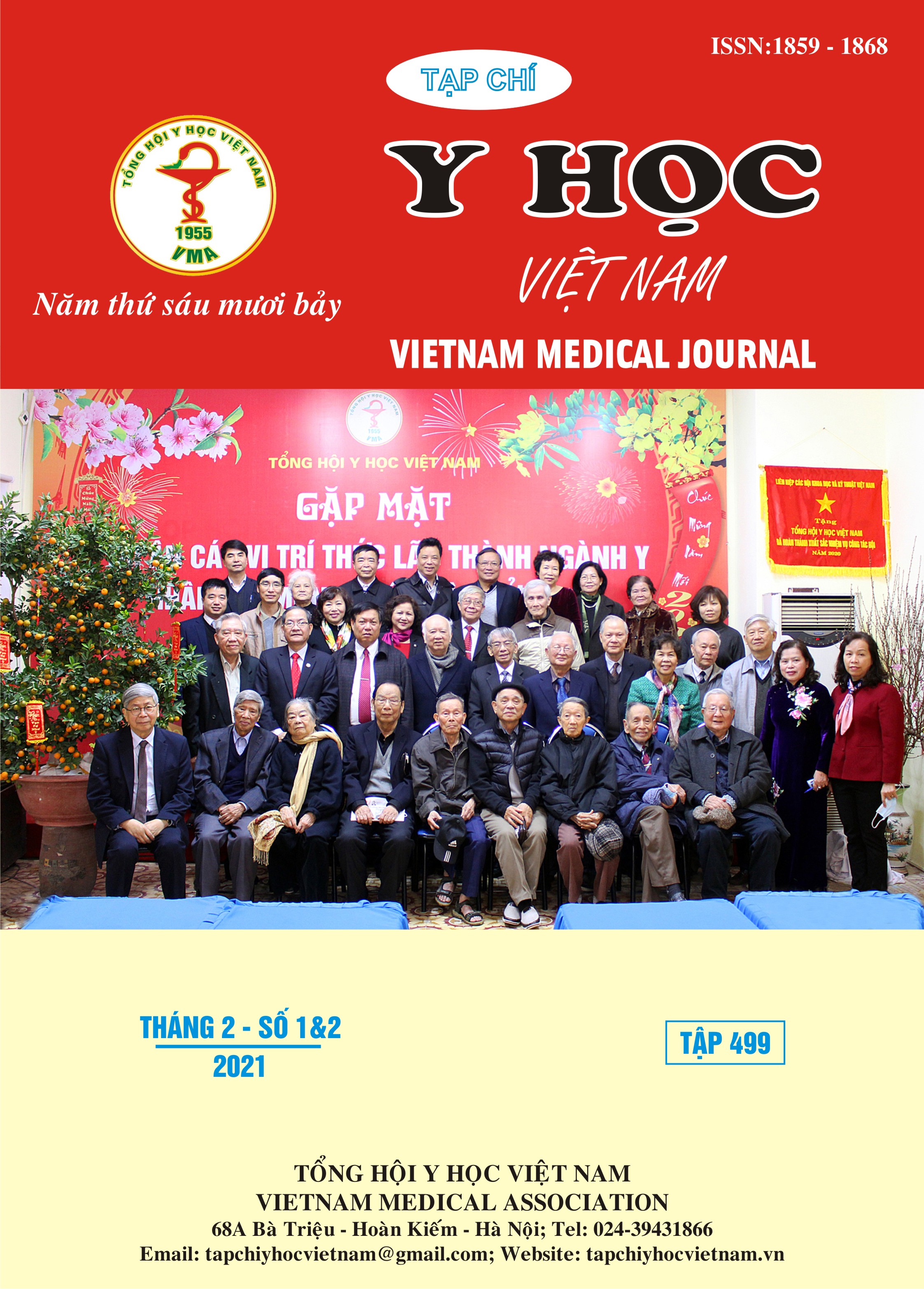CORRELATION BETWEEN CLINICAL PARACLINICAL WITH RESISTANT CHARACTERISTIC IN RECURRENT TB PATIENTS
Main Article Content
Abstract
Purpose: Research on the correlation between clinical, para – clinical with resistant characteristic in recurrent TB patients. Objective and method: A prospective, cross-sectional study of 56 recurrent tuberculosis patients were diagnostic and treatment at Pham Ngoc Thach Hospital, Ho Chi Minh City in 2 months. Analysis of algorithm data base on statistical software and give results to research objectives. Results: Fever, cough and breathing difficulties symptoms were common in single drug– resistant TB patient. Chest X ray findings:Mild level lesion in multi – resistant TB(approximate 50%) was more commonly than single – resistant TB (approximate 25%). Moderate and severe lesion were only in the single – resistant TB. TB cavity was in all multi – resistant TB patient and about 25% in single – resistant TB patient. The correlation between positive AFP sputum smears results and resistant characteristic: Pulmonary TB patients with AFB smear-positive (1+) include 7 patients with INH resistance and 3 patients with RMP + INH resistance. Pulmonary TB patients with AFB smear-positive (2+) include 3 patients with INH resistance and 1 patient with RMP + INH resistance. Pulmonary TB patients with AFB smear-positive (3+) include 2 patients with INH resistance and 1 patient with RMP + INH resistance. Pulmonary TB patients with AFB smear-positive levels was not correlation in patients with INH resistance or patient with RMP + INH resistance. Conclusion: The clinical and paraclinical of resistant TB is different from the new TB. Research on the correlation between clinical and para – clinical of drug - resistance of TB is always treat and prevent significance.
Article Details
Keywords
Drug – resistant tuberculosis, multi - resistant tuberculosis, single - resistant tuberculosis, recurrent tuberculosis
References
2. Girum T, Muktar E, Lentiro K (2018), “ Epidemiology of multidrug-resistant tuberculosis (MDR-TB) in Ethiopia: a systematic review and meta-analysis of the prevalence, determinants and treatment outcome”.Trop Dis Travel Med Vaccines.4:5. doi: 10.1186/s40794-018-0065-5.
3. Adigun R, Singh R(2019), “Tuberculosis”, StatPearls [Internet]. Treasure Island (FL): StatPearls Publishing; 2019 Feb 6.
4. Jamshid Gadoev, Damin Asadov, Anthony D. Harries Recurrent tuberculosis and associated factors: A five - year countrywide study in Uzbekistan (2017), “”, PLoS One. 2017; 12(5): e0176473. 10.1371/journal.pone.0176473.
5. Nguyễn Thị Hậu (2015), “Nghiên cứu lâm sàng, cận lâm sàng, tỷ lệ kháng thuốc và kết quả điều trị tấn công ở bệnh nhân lao phổi tái phát”. Luận văn Thạc sỹ, Học viện Quân y, Hà Nội 67tr.
6. Jacobs MG, Pinto Junior VL (2020), “Characterization of drug-resistanttuberculosis in Brazil, 2014”, Epidemiol Serv Saude. 2020 Feb 3;28(3):e2018294. doi: 10.5123/S1679
7. Nguyễn Văn Thái (2019), “Nghiên cứ tính kháng Rifampicin và mối liên quan giữa một số đặc điểm lâm sàng cận lâm sàng với tính kháng thuốc ở bệnh nhân lao phổi tái phát, Luận văn chuyên khoa 2, Học viện Quân y, Hà Nội72tr.


